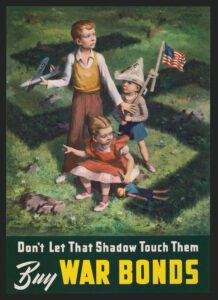Michael K. Honey, author of Going Down Jericho Road: The Memphis Strike, Martin Luther King’s Last Campaign, reviews Elizabeth Jacoway’s Turn Away Thy Son and considers the implications of desegregation on the 50th anniversary of the national crisis at Little Rock’s Central High School.
On September 4, 1957, 15-year-old Elizabeth Eckford stepped off a bus and turned quietly, apprehensively, toward Central High School in Little Rock, Arkansas. National Guardsmen ringed the school, weapons drawn. Elizabeth walked across the street and into a screaming mob of 200 whites. She kept her eyes straight ahead as she approached the impressive brick edifice of one of the city’s best schools, until two Guardsmen raised their guns and stopped her. Her knees about to buckle, she turned around and walked back toward the bus stop. As the crowd swirled around, someone yelled, “Lynch her!”
A photographer captured that iconic moment in civil rights history, snapping an image of the young black woman clutching her books as a white teenager named Hazel Bryan followed close behind screaming, her face contorted with rage. As an adult, Bryan would later apologize, but on September 4 she was just another hate-filled white person. Braving threats from white adults in the street and direct physical and verbal attacks by white students, Eckford and eight other black students—Gloria Ray, Jefferson Thomas, Carolotta Walls, Thelma Mothershed, Terrence Roberts, Melba Patillo, Minnijean Brown and Ernest Green—finally made it into Central High School on September 25, but only after President Dwight Eisenhower sent in federal troops. For the Little Rock Nine, there would be no let up. The abuse and violence continued for the rest of the school year.
In Turn Away Thy Son: Little Rock, the Crisis That Shocked the Nation (Free Press), Elizabeth Jacoway tells this inspiring and deeply discouraging story that has stark implications for the condition of education and race relations in America today. In 1957 Little Rock’s all-white school board had chosen nine black students, out of hundreds of applicants, to “integrate” only one school. The action was in token compliance with the 1954 U.S. Supreme Court decision Brown v. Board of Education, but it evaded the intent of the ruling by sheltering the vast majority of white students, especially those from well-off districts, from full-scale desegregation.
Brown had overturned Plessy v. Ferguson, an 1896 decision that claimed segregation did not violate the Constitution’s equal protection clause established by the 14th Amendment, which was enacted by Congress after the Civil War to enforce equal rights. Under the guise of “separate but equal” enunciated in Plessy, school districts almost everywhere separated black and white students. They grossly underfunded schools for black children, making a mockery of the principle of equality.
The Brown decision called on school boards to pursue integration with “all deliberate speed,” but provided no direction on how to implement it. Strong and immediate government action might have effectively enforced the ruling, but by 1957, segregationists had had time to gather their forces and find ways to openly defy or subvert the ruling. The strategy of “tokenism” adopted by the Little Rock school board became the dominant mode for the nation’s schools. But even that was too much for some segregationist political leaders and white parents. A mass movement of white supremacy swept through the South as mobs and individuals threatened to beat, bomb, ostracize or lynch African Americans and any whites who supported desegregation. According to Jacoway, Arkansas Governor Orval Faubus did not intend to lead the segregationist movement. Virgil Blossom, the superintendent of Little Rock schools, sought to engineer tokenism but blame it on Faubus, the federal courts or someone else. As the white defense of segregation heated up in September 1957, Faubus took up the cause of “state’s rights.” He ordered the National Guard to defy a federal court order and stop the Little Rock Nine from entering Central High.
President Dwight Eisenhower briefly sent in federal troops to assert the authority of the federal courts over state and local governments. But Ike had cold feet. Like many other whites of that era, he worried that racial integration would lead to “race mixing,” code for interracial sex. He took most of the troops out as quickly as possible, and left a few federalized National Guardsmen at the school. But they did little to protect the black students, and school officials mostly looked the other way as white student violence against black students escalated throughout the 1957-58 school year.
Much of Jacoway’s story—perhaps too much—concerns behind the scenes machinations of Blossom, Faubus and the local business elites over an entirely token approach to integration. But her account does provide food for thought. Those white citizens’ revolts can be seen as part of the making of the New Right that came to dominate the American political landscape in the 1960s and beyond.
Although a number of Southern progressives had come to power in the 1940s, and unions and civil rights groups had made advances, segregationists controlled Southern politics in the 1950s. In the summer of 1958, Faubus called the state legislature into special session and a law was passed allowing the governor to shut down Little Rock’s public schools. Many white students then enrolled in religious schools—foreshadowing the current surge in home schooling and private “Christian” academies as acceptable alternatives to public schools in crisis. Segregationists characterized integration as part of a Communist conspiracy to destroy America, therefore making white supremacy a patriotic act in defense of national security.
As a white native of Arkansas, Jacoway is more conscious than others might be of how white supremacy has undercut the promise of equal rights. She explains throughout the book that the white supremacy movement has always been based on “fears that were primarily sexual in origin,” as one contemporary of the Little Rock school crisis put it. White male fears that white women might actually prefer black men as sexual partners turned into the mythology of African-American sexual aggression, a mythology long used to justify lynching. The accompanying “religious attitude toward the dogmas of that faith—white superiority and functional separation of the races into castes”— made it difficult if not impossible for white folks to think clearly about race.
Sadly, Jacoway notes, in the 50 years since the Little Rock Nine stood up for justice, the city’s schools have been devastated by white flight to the suburbs and constant lawsuits to block token integration. “As late as 2006, the price tag of all the court battles and their judgments, according to one report, stood at $786 million, while the results in terms of racial balance and improved student performance were negligible.”
Also disturbing, Jacoway says, “The nation’s retreat from the quest for civil rights left the time-honored American values of white supremacy without effective challenge.” This can only be remedied when the nation chooses to “discuss candidly the fears that continue to animate white racism.” One might add that the nation also needs a historic shift in priorities that includes an agenda to address the continuing de facto racial apartheid in our schools, a prison population of some 2 million (half of whom are black or Latino) and vast economic inequality.
Today we justifiably celebrate the heroism of the Little Rock Nine and all those who faced down mobs and persisted in their quest for opportunity. The black students and their families were subjected to constant humiliation, threats and violence. Their white supporters were also targeted. Little Rock contains a great story of heroism. The more sobering tale, however, is not of the triumph of integration but of its failure. Fifty years on, many believe that Brown has been largely defeated and that Little Rock is a symbol of America’s inability to live up to its declared core beliefs in equal rights and justice for all.
Originally published in the October 2007 issue of American History. To subscribe, click here.




